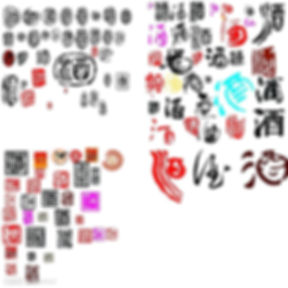2011 Chateau Beaucastel Chateauneuf du Pape

Tasting. Open and unpretentious, 2011 Chateau Beaucastel Chateauneuf du Pape wine is of medium bodied, in lighter, early drinking style that focuses on fresh, sweet red fruits and spice, with a sweet, spicy, slightly dusty, garrigue and kirsch finish. Not the block-buster type of Rhone, its black fruits shows openly, while quite refined, grainy bone tannins complete the route. The tannins aren’t up to the standard of the 2010, even 2012, and are a bit gummy.

Vintage. Well put by Tim Atkins, ‘If 2011 Rhône was a Beatle, it would be George. The two stellar years of 2009 and 2010 would be Paul and John; 2011 takes a good third place. Though far from a write-off, 2008 was a bit of a Ringo.’ So 2011 is not a ‘great’ vintage for the Southern Rhône that you should snap up and throw in the cellar, but stylistically this is for sincere drinking amongst like-minded wine friends. .
Compared to similar wines from 2011 of the region. 2011 Chateau Beaucastel Chateauneuf du Pape does not have the ‘modernity’ of Domaine du Pegau. Nor does it possess the concentration and power of Domaine de la Mordorée. It is not as ‘crowd-pleasing’ a la style easy-to-appreciate of Domaine Pierre Usseglio(basic cuvee), the 2011 Chateau Beaucastel Chateauneuf du Pape does have, as rightly put by Robert Parker, diversities charge with full of nose from sweet bouquet of spiced black cherries, plum, truffle, saddle leather to underbrush; a gorgeously textured that gives a solid mid-palate depth, terrific purity of fruit and ripe tannin, and is approachable and enjoyable even now, it should nevertheless evolve gracefully for 15-20 years , Scores are very consistent, like WE94. WS94 and RP94.

Enabling factors from Viticultural practices. 2011 Chateau Beaucastel Chateauneuf du Pape is product from extreme care done to the viticultural practices. For many years Beaucastel's red wines included a much higher percentage of Mourvedre than most other producers in the region, thanks in no small part to the friendship between Jacque Perrin and the Tempier family in Bandol. Many more producers have been increasing the amount of Mourvedre in their blends in the past 10 years, partially as a means of moderating the alcohol level of their wines, as Mourvedre tends to ripen at lower sugar levels than the more popular Grenache grape. Winemaking at Beaucastel involves harvesting many separate parcels of different grapes and fermenting them separately. Those red grape varieties that tend to oxidize quickly, such as Grenache, get fermented in cement tanks, while grapes that need more oxygen, such as Syrah and Mourvedre, get placed in wood tanks. Occasionally the Syrah will include some whole clusters and stems, but generally most of the red grapes are destemmed, while the white grapes are whole-cluster pressed. Tank is dealt with as an individual, whole batch of wine to be made without a recipe or template. After fermentation, the wines age in a combination of large oak casks and smaller oak barrels of varying age and size.

Enabling factors from Terroir factors. Another factor is the excellent terroir of Beaucastel. Like all great wine estates, the vineyard is located on a unique terroir, situated in the far, north east of Chateauneuf du Pape in Coudoulet. The terroir consist of sandstone that is covered by a massive array of multi colored rocks, stone and limestone soil. The rocks reflect the sunlight and hold in the heat from the sun. The heat transfers to the vines at night. The terroir at Beaucastel also affords natural drainage. Another key component to Beaucastel and much of Chateauneuf du Pape is the wind known as the warm Mistral, which keeps the air clean and the terroir dry.

Enabling factors from Choice of Grapes. Vinfication is special as well. The grapes are completely destemmed. Beaucastel macerates each of the grape varieties separately in enamel coated vats. While bunch fermentation takes place in a combination of cement and steel vats. Malolactic fermentation also takes place with the varieties separated. At the start of the wine making process, Beaucastel quickly heats up the skins of the grapes until they reach a temperature of 80 degrees Celsius or 176 Fahrenheit. After a short time at that high heat, about 20 seconds, the fruit is cooled back down to 20 degrees Celsius for fermentation. We are told this purpose allowing the grapes the short term exposure to heat at Beaucastel is to remove select enzymes and in the process, this retards oxidation, and slows fermentation, allowing for more freshness and purity in the fruit. In turn, the process will decrease the time needed for the extraction process.






















